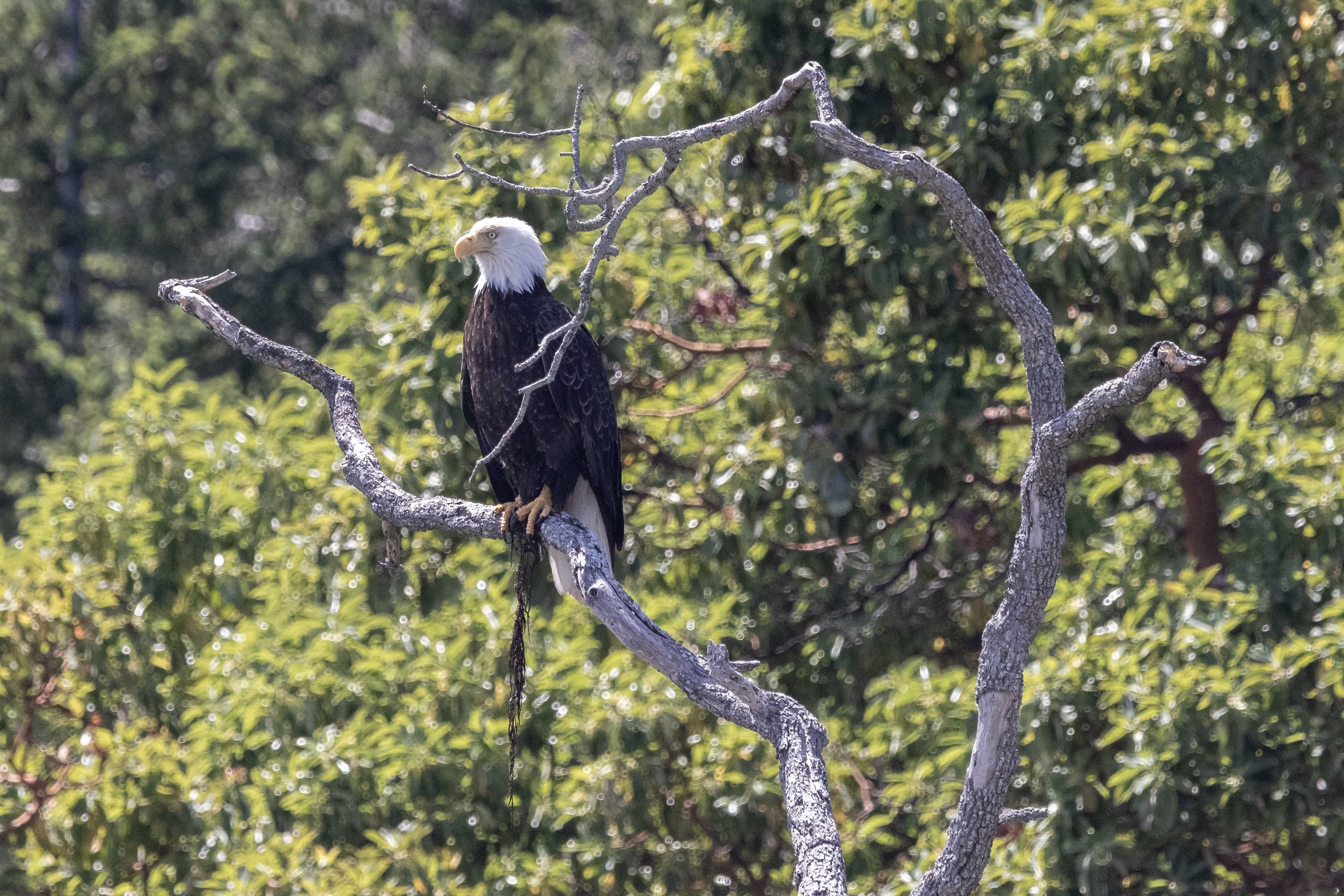June 13, 2024, 10:30am - Humpbacks, humpbacks, humpbacks!
This morning we didn’t have to go far before finding our first humpback! However, it was travelling quite fast and doing long dives so we decided to try our luck elsewhere. It didn’t take long for us to stumble into what we call “humpback soup”. This is where you are with humpbacks but can see other humpbacks in the distance, usually in multiple directions! Amongst the whales that were there, we were able to ID Dandelion (BCY1107), Fader (BCY0195), Eeyore (BCY1221), Kelpie (BCY1276), CRC-15027, Smoke (BCX2183), and CRC-21677. Now that’s a lot of whales!
Having all these humpbacks around is wonderful but seeing certain whales reminds us of the dangers these animals face in their day-to-day lives. A big issue for our humpbacks is the constant threat of entanglement in fishing gear. It’s estimated that 1 in every 2 humpbacks in the Salish Sea has some form of entanglement scaring. While we know how many survivors there are, we will never truly know how many of these gentle giants we have lost over the years due to entanglement. While we theorize that humpbacks can live to around 80 years old, many don’t because of the lasting impacts of entanglement.
Today we saw Smoke who bears the scars of what was likely a rope rubbing on the back of their fluke. This has created a diamond-shaped pattern that makes them rather easy to identify. While Smoke’s injuries have long healed, we were extremely disappointed and saddened to notice that Dandelion had fresh entanglement injuries around their fluke and their back. While we are happy Dandelion is free and will likely heal without issue, it’s a somber reminder that not every whale gets free.
If you find an entangled humpback, DO NOT try to save it yourself. There are professionals who are trained to deal with these types of situations. If you see an entangled whale, call 1 (800) 465-4336.
Entanglement is not the only way humpbacks can get marks. They can also have barnacles growing on them. You can notice these in the photos below barnacles will grow along the sides of the flukes, especially at the tips. Sometimes it can even look like kelp is growing on them. This is not kelp, but a type of barnacle species called Gooseneck Barnacles! Gooseneck Barnacles are quite long and can look like kelp. They also will only grow on hard surfaces. Humpbacks get two other types of barnacles that will grow on them - Acorn and their very own Humpback Whale barnacle. Gooseneck barnacles will grow on these other ones! When barnacles fall off of a whale, they can leave little circles of white or black depending on what pigment they fell off of.
The other way humpbacks can get marks is from cookie-cutter sharks. These guys are pretty small, only about half a meter long, but they can inflict decently big wounds. They are also tropical sharks, so they are down on the humpbacks’ breeding grounds and are not found in British Columbia. To feed, they will latch onto a marine mammal, preferably much bigger than themselves, and then spin. This takes a circular chunk out of a whale. They heal over as indented, circular white scars. These scars are also found on many other species of whales and dolphins.
After spending plenty of time out in Humpback Land, we headed to our favourite place to see some sea lions and seals. We found a huge male looking particularly impressed with himself, and plenty of other sea lions around the rocks. We also found some harbour seals enjoying their sunny day. We got a good look at the pinnipeds and then headed into the Gulf Islands for a scenic ride home. But of course, we stopped for some bald eagles and couldn’t go back to the harbour without saying hello to the cormorants at the Gabriola Bluffs!
Please enjoy today’s photos taken by Marine Naturalists Aly Kohlman, Hayleigh Hilbert, Lucy Willis, and Val Watson!
Did you know the bumps on a humpbacks mouth are actually giant hair follicles and humpbacks actually have whiskers! Photo by Aly Kohlman
Look closely at Dandelion’s fluke, they has fresh cuts that are likely from being entangled. Photo by Hayleigh Hilbert
Eeyore showing off their fluke. Photo by Hayleigh Hilbert
Dandelion had fresh cuts down their back (likely from entanglement). Photo by Hayleigh Hilbert
Can you see the cluster of whale lice on his whale? Photo by Aly Kohlman
Kelpie with a Seaspan ferry. Photo by Aly Kohlman
Kelpie’s beautiful fluke. Photo by Hayleigh Hilbert
Can you see the white pectoral fin under the water? Did you know humpbacks pectoral fins can be 1/3rd of the length of their body? Photo by Hayleigh Hilbert
The scar on Smoke’s fluke makes them really easy to identify. Photo by Hayleigh Hilbert
Have you ever seen up a humpback’s blowholes before?! Photo by Hayleigh Hilbert
The white in this is a pectoral fin. Photo by Val Watson
Steller sea lion in a cuddle puddle. Photo by Lucy Willis
A large male Steller sea lion we affectionally refer to as Stinky Steve. Photo by Lucy Willis
Did you know Harbour seals have nails on their fins? Photo by Aly Kohlman
We call this a banana pose. Photo by Hayleigh Hilbert
There’s 2 bald eagles in this photo. Look closely at the left side of the nest and you might see the eaglet. Photo by Aly Kohlman
A bald eagle with nesting material in its talons. Photo by Lucy Willis
River Otter swimming. Photo by Hayleigh Hilbert
The majestic turkey vulture. Photo by Aly Kohlman
A pigeon guillemot swimming around. Photo by Val Watson
2 cormorants in their nest. Photo by Aly Kohlman
Our zodiac Keta with Mount Baker in the background. Photo by Aly Kohlman






















